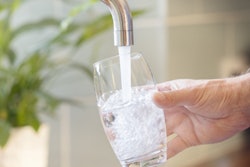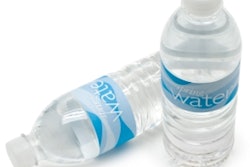
Technology funded by the U.S. Centers for Disease Control and Prevention (CDC) could give 19 million people in the U.S. access to optimally fluoridated water for the first time. The system uses a fluoride tablet that dissolves in water, similar to how chlorine tablets work for swimming pools.
The tablet system was designed for the nearly 32,000 small public water systems that cannot yet provide residents with fluoridated water, the CDC said. Many of these systems are in underserved or rural areas, which already have exacerbated oral health needs.
"As we honor World Oral Health Day on March 20, I am proud we could for the first time, make available such an important prevention strategy to so many people," stated Dr. Karen Hacker, director of the CDC's National Center for Chronic Disease Prevention and Health Promotion, in a release.
The new water fluoridation system aims to help the U.S. hit its Healthy People 2030 goal of providing access to fluoridated water to 77.1% of the population. In 2016, 72.8% of people were served by community water systems with optimally fluoridated water.
The CDC has been working toward supporting a tablet-based fluoride system for nearly a decade to better serve small communities. Often, small water systems lack the scale and resources needed to install and maintain traditional fluoridation systems.
To solve this problem, the CDC launched a small-business funding opportunity in 2013, asking companies to pitch a tablet-based community water fluoridation system. Florida-based KC Industries (KCI) took the CDC up on its offer and won two rounds of funding to create its tablet and feeder system.
A team of KCI water science, engineering, marketing, logistics, and supply chain management professionals thought through everything from the system's packaging to transportation. In the end, they created a tablet system that garnered approval from NSF International and the American National Standards Institute for use in public water systems.
The KCI system's design is ideal for the millions of Americans living in rural communities, as it can be used in water systems that serve between 50 and 10,000 people, the CDC noted. The development is crucial because many people living in these rural communities have a harder time accessing school-based dental sealant programs and dental appointments to help prevent decay.
"Drinking fluoridated water keeps teeth strong and reduces cavities, resulting in less pain, fewer fillings or teeth pulled, and fewer missed days of work and school," Hacker stated.



















